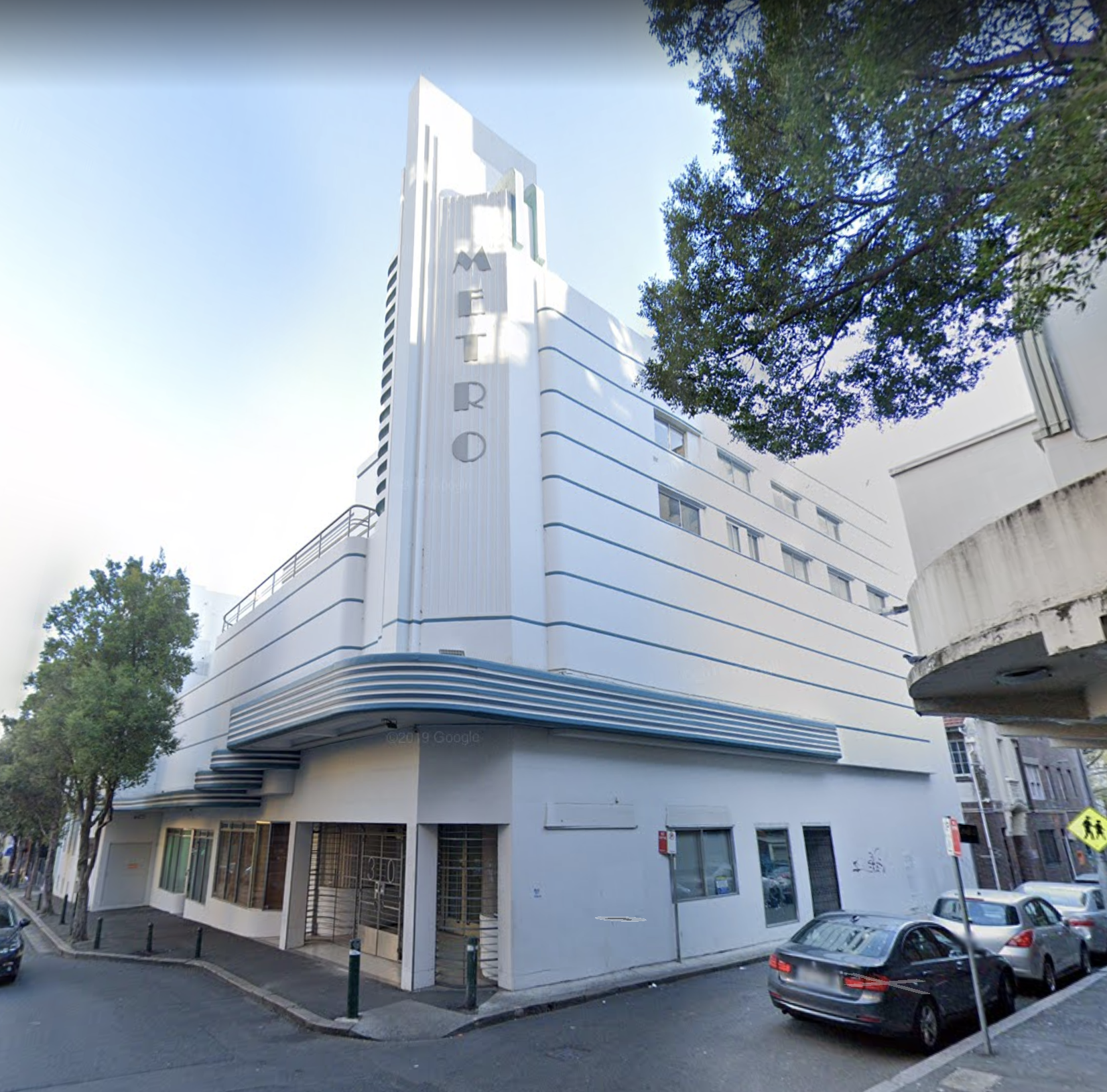
Art Deco architecture of Potts Point and Elizabeth Bay proves the potential of Kings Cross

Image: Author Peter Sheridan says preserving the Metro/Minerva is key to reigniting the exclusivity and vibrancy of the area. Photo: Google Maps.
By EVA BAXTER
Potts Point and Elizabeth Bay were some of Sydney’s most exclusive suburbs in the mid 1800s to 1970s.
Author Peter Sheridan encompassed Sydney’s Art Deco buildings for the first time in his 2019 book Sydney Art Deco. In doing so, he realised how significant the number of Art Deco buildings in the Potts Point and Elizabeth Bay area are compared to its size.
His new book Sydney Art Deco and Modernist Potts Point and Elizabeth Bay Walks is a 2–3-hour walking guide of the one-square-km precinct.
Peter told City Hub that the architectural profile of Elizabeth Bay and Potts Point is unique to the rest of Sydney. The book celebrates low-rise apartment blocks with a maximum of 12 or 14 storeys, which are not the standard Sydney high rise.
“What you’ve got is 18,000 people in one square kilometre, of which 98% live in apartments, and most of those are not high rise.
“Not only is it completely upside down in terms of where most people live, but the type of apartment block they live in is not your modern 50, 60 storey high rise,” he said.

One of Peter’s favourite buildings highlighted in the book is the Macleay Regis, which was one of the last of the grand Art Deco apartment blocks completed before the start of World War 2.
The Macleay Regis had a New York style, and catered for wealthy clientele with 87 apartments, a penthouse, a live-in concierge, maid service and internal telephone system that connected occupants to the pharmacy, cobbler, hairdresser and florist located in the small shops on the ground floor at street level.
Peter told City Hub the Macleay Regis was an upmarket apartment that was top of the line and exemplifies the type of person who was living in the area at the time.
Preserving the Metro/Minerva
According to the introduction of the book, “the history, architecture and cosmopolitan lifestyle make this one of Sydney’s special places to live in, to visit and most importantly, to preserve.”
The Metro/Minerva theatre is highlighted as an important Art Deco icon, and perhaps the best remaining commercial example of the Inter-War Functionalist Style which emerged in Australia in the 1930s.
The Metro was heritage listed in December 2020, and Peter makes clear his hopes this will forestall damaging redevelopment and escalate the possibility for its ultimate reinstatement as a live theatre venue.
“The conversion of the Metro back to its original state would not be a huge thing to do, and yet it is quite possible and more than likely that this building will be converted into something quite different, a hotel,” Peter told City Hub.
“That’s unfortunately the possibility with any building in Sydney and always has been. I think a lot of other places in Australia and in the world are much better at preserving their heritage.”
The preservation of the Metro/Minerva is key, according to Peter, to try and create in Potts Point and Elizabeth Bay that exclusivity and interesting, vibrant nature for both residents and visitors.
“There is so much potential at the Cross.
“At the moment, the whole area is blighted, and the possibility of bringing a sophisticated audience that is not people coming to drink and rage, but actually coming to enjoy live theatre, would bring a whole new type of demographic or input into this area which would see the restaurants improve, and the whole area would be benefited by one live theatre being restored,” he said.
Architecture as art
Making the book a walking guide proved timely due to the rules across Sydney which prohibit any real activity besides outdoor exercise. Peter said the idea for the book didn’t have anything to do with COVID.
“Creating a walking booklet gives people that impetus to maybe see all these things together in real life, rather than just a whole series of pictures.
“This is a sequence which allows you bit by bit to follow that in real life, walking around, looking up, enjoying the actual area itself and the buildings in their location as they exist,” he said.
The 5km rule means many Sydneysiders will have to wait until rules are lifted before travelling to the Cross for the walk. Those within 5kms can see Sydney’s built heritage in real life.
“I think COVID does give people an opportunity to re-evaluate their city in a different way and the walking booklet for those who can access the area would be an opportunity that they might take advantage of,” said Peter.
Peter said people overlook architecture as a form of art in a number of ways.
“I think it becomes sort of hiding in plain sight.
“The Art Deco architecture in Australia is significant, of good quality and it was the first global style movement. One of the things about Art Deco was it wasn’t just in architecture; it was in almost every aspect of life. In industry and consumer goods and so forth.

“Once you appreciate what Art Deco represents, architecture is just another form of art utilizing this design motif or design aesthetic.”
Another of Peter’s favourite buildings in the book is 17 Wylde st. He said it shows the transition between the Art Deco style and the Modernist style.
“I’m convinced this area is a national treasure and it isn’t being appreciated in totality for what it is.”
Peter intends to bring out another walking book on the CBD and another on pubs, each highlighting specific areas of Sydney’s Art Deco and how it differs from anywhere else in Australia.









